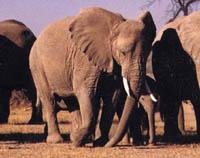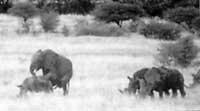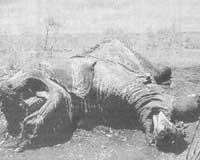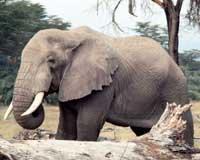Acoustic surveillance: noises
1999/11/14 Kortabarria Olabarria, Beñardo - Elhuyar Zientzia

Soon computers will be able to warn about animal disease and perhaps make a diagnosis. Researchers from the Catholic University of Leuven (Belgium) have developed software capable of detecting the cough and marmara of sick animals. In case of pain of the cattle, the program can be enabled to give the alarm.
"Cough is the first sign for the baserritarra, which indicates that something goes wrong in a group of animals." says Daniel Berkmans, head of the Leuven team. "But to be able to cough in a group of animals or in a stable of hundreds of pigs it is necessary to have a very fine ear." That's why Berkmans and his colleagues have written a computer program that can work automatically. At the moment we are working with pigs. To develop the program, researchers have built a database with about 5,000 different noises recorded to six pigs. In the database, in addition to the brown and traditional pliers of pigs, the sounds of the metal doors and the fans of the txerritoki have been included.
The program compares the sounds of the time with those of the database. To do this, place the cough in several frequency bands until you find significant energy increases in the collected cough.
The system has been tested with pig groups and the results have been satisfactory. Berkmans says that in the first results the success of diagnoses has been 92%.
When they enter new environments, pigs often stumble. People who do not have health problems do not take long to remove their cough, while sick people cannot control it. Therefore, if the pig coughs a lot or the cough frequency is higher than a certain limit, the computer program alerts him.
According to the group of researchers working with pigs, what has been done so far is only a beginning. And its intention goes further. The aim of the researchers is for the computer program itself to explain what the disease is. To achieve the goal in the shortest possible time, the Berkmans team collaborates with veterinarians in the development of a database with sounds of potentially ill animals. This technique allows researchers to analyze, for example, whether "dry" or "wet" coughs are indicators of specific diseases. On the other hand, to complete the system are studying the video-infrared of pigs. They want to know if there is a relationship between cough and body temperature.
Berkmans is especially interested in whether the program can be molded to indicate when animals have pain. "Can we measure the sounds of a pig and know whether or not it is? It seems logical and if it can be done with a pig, it can be done with other cattle." An audio company from Sydec, St. Niklaas (Belgium) is working to achieve a prototype based on this software and to associate it with a climate control system. This device would alert when medical care is needed and automatically adjust the temperature. Often the disease of the respiratory system aggravates the cold air entering the buildings at night.
Africa with elephants
As with pigs in Belgium, Africa is beginning to use acoustic techniques to control the number and health of elephants. A group of biologists and acoustic engineers are planning to launch a new technique for the care of elephants that remain hidden in the central jungles of Africa. Because elephants hide in the jungle because of hunters circulating in ivory, planes cannot do any control. Therefore, scientists cannot know how many elephants there are or in what state they are in. To solve the problem they want to use a technique based on acoustics. In fact, a few years ago scientists discovered that elephants use infrasonic sounds for communication. Although these infrasonic noises go far, the human hearing system cannot distinguish them. It is intended to use a system based on ultrasonic microphones to record the infrasonic sounds produced by elephants. With these recordings it is expected that, in addition to controlling the physical environment of elephants, many data on their behavior will be obtained.
Although the technique seems new, it has already been used previously, but with whales. In the case of elephants, through satellite or radio connections, the transit of ivory traffickers can be known. Therefore, new techniques may be used to deal with illegal hunters. The microphone network will provide information on elephant movements as well as how to respond to calls from other elephants. Scientists will develop a database of the sounds recorded, which will help to know at all times the state of elephants. For example, elephants emit a special sound while when in danger they make another.
If the use of acoustic techniques were successful, it could also be used with other endangered species such as gorillas or rhinos.
Published in 7

Gai honi buruzko eduki gehiago
Elhuyarrek garatutako teknologia






